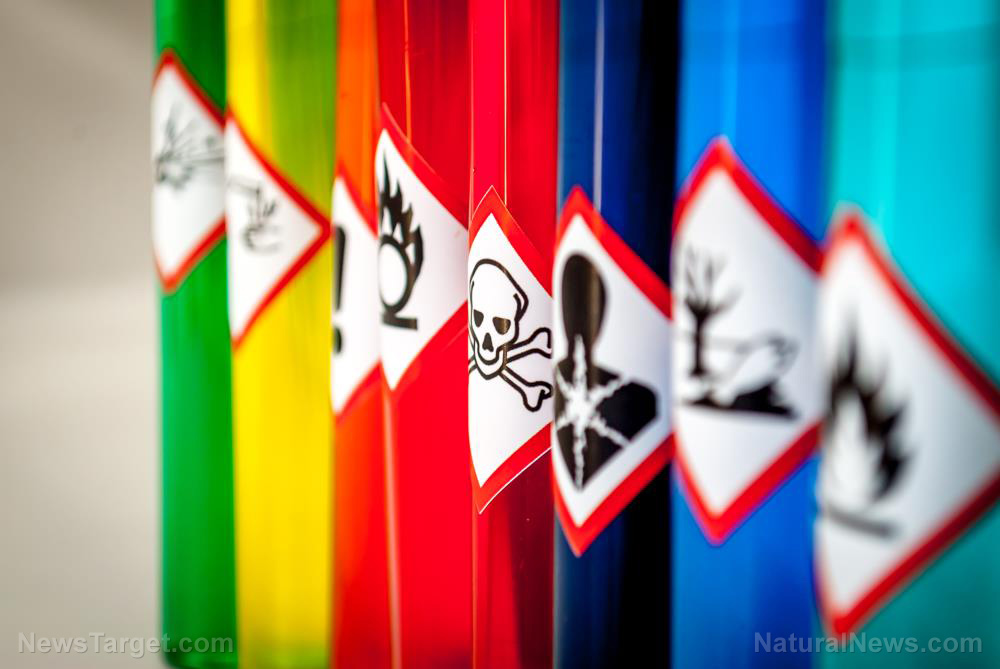Chemicals found in tap water could be responsible for more than 100,000 cases of cancer
09/10/2020 / By Divina Ramirez

Diet, genetics and environmental factors all have a hand in determining one’s risk for cancer, one of the deadliest chronic diseases around the globe. But a recent report from an environmental advocacy group cautions that millions across the US could be facing a greater risk of cancer due to contaminated tap water.
In a major breakthrough, scientists from the Environmental Working Group (EWG) estimated that exposure to 22 cancer-causing contaminants in community water systems nationwide could result in more than 100,000 cases of cancer over the span of a lifetime among people using these water systems.
Moreover, although most tap water meets the prescribed federal standards, the EWG scientists found that the cancer-causing contaminants present in tap water, including arsenic, uranium and radium, appear at concentrations that could harm human health.
Tap water isn’t as safe as people are led to believe
It’s no secret that drinking water contains a complex mixture of contaminants. So in order to ensure that water companies offer safe and reliable drinking water, the US Environmental Protection Agency (EPA) creates regulations that set the maximum amount of each contaminant that’s allowed in public water supplies.
However, federal authorities do not take into account that people are often exposed to multiple contaminants at the same time. In the real world, people are exposed to a combination of chemicals, said lead author Sydney Evans. Therefore, it is important to assess the combined effects of multiple contaminants on human health.
To this end, Evans and her colleagues compiled a list of 22 contaminants with carcinogenic risks detected in 48,363 community water systems across the US between 2010 and 2017. The EWG estimates that these serve an overwhelming 86 percent of the US population or about 279 million people.
The scientists then conducted a cumulative assessment of cancer risk due to these contaminants and found that four in 10,000 people will have cancer over the span of their lifetimes. Of all 22 contaminants, 87 percent of the cancer risk present in tap water can be attributed to arsenic and toxic chemicals from disinfectants.
Long-term exposure to arsenic from drinking water can cause cancer and skin lesions, according to a 2018 report from the World Health Organization (WHO). The toxic chemical element has also been associated with a greater risk of other chronic conditions, including heart disease and diabetes.
But despite these troubling health risks, Evans and her colleagues found that a vast majority of the 48,363 community water systems are in compliance with EPA regulations. This means that the concentrations at which the contaminants appear in can still be considered well within the legal standards.
In all, these findings highlight the need to prioritize source water protection to make sure that toxic and cancer-causing contaminants do not get into drinking water supplies in the first place, said Olga Naidenko, a member of the research team and a senior scientist specializing in children’s environmental health at the EWG.
However, the scientists did not look into the possible contaminants present in groundwater from private wells, which serve more than 13 million households across the US. Therefore, their projected 100,000 cancer cases could still be a modest estimate.
Findings are relevant for both residents and authorities
This kind of cumulative risk assessment has never before been applied to a national dataset of drinking water contaminants. Earlier studies known to have used this kind of assessment were preoccupied with determining the impact of exposure to numerous air pollutants on human health.
This approach provides a better picture of the risks that people face in the real world as a result of exposure to various contaminants in drinking water, said Kelly Reynolds, a public health educator in environmental science at the University of Arizona who wasn’t involved in the study.
Overall, the research could help authorities better regulate contaminants in drinking water for the sake of public health. Evans also said that their findings could help educate people about their health risks from exposure to contaminants in drinking water.
To ensure as little contamination as possible, the EWG suggests installing a specialized water filter designed to remove arsenic, which is one of the more prevalent contaminants in tap water. (Related: Is there arsenic in your water? Exposure from private wells may be significant.)
Read more articles about the dangers of drinking toxic water at CleanWater.news.
Sources include:
Tagged Under: arsenic, arsenic poisoning, contaminants, environment, pollutants, toxic chemicals, toxic elements, toxic water
RECENT NEWS & ARTICLES
COPYRIGHT © 2017 HEAVY METALS NEWS



















